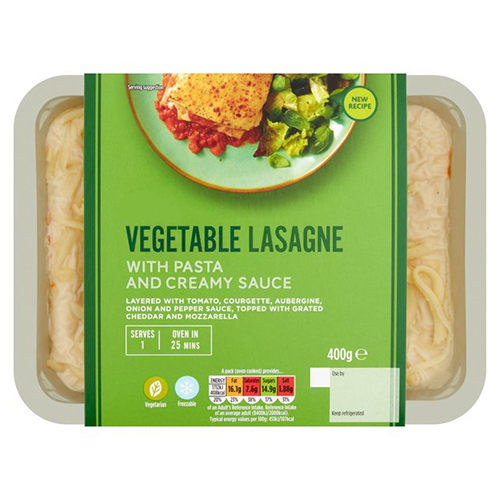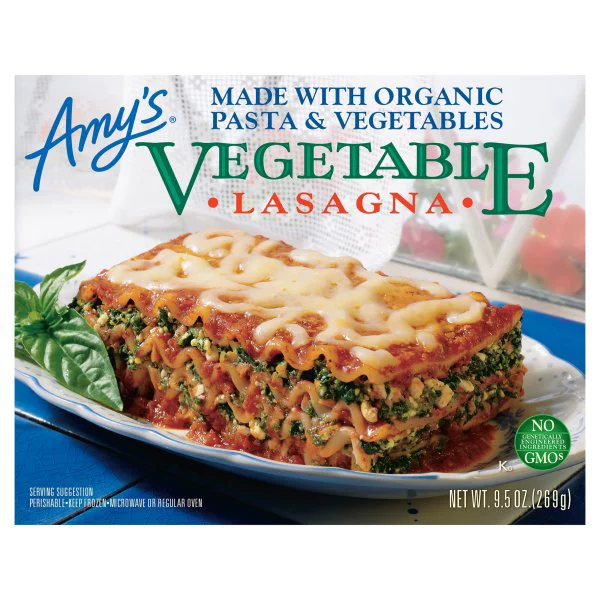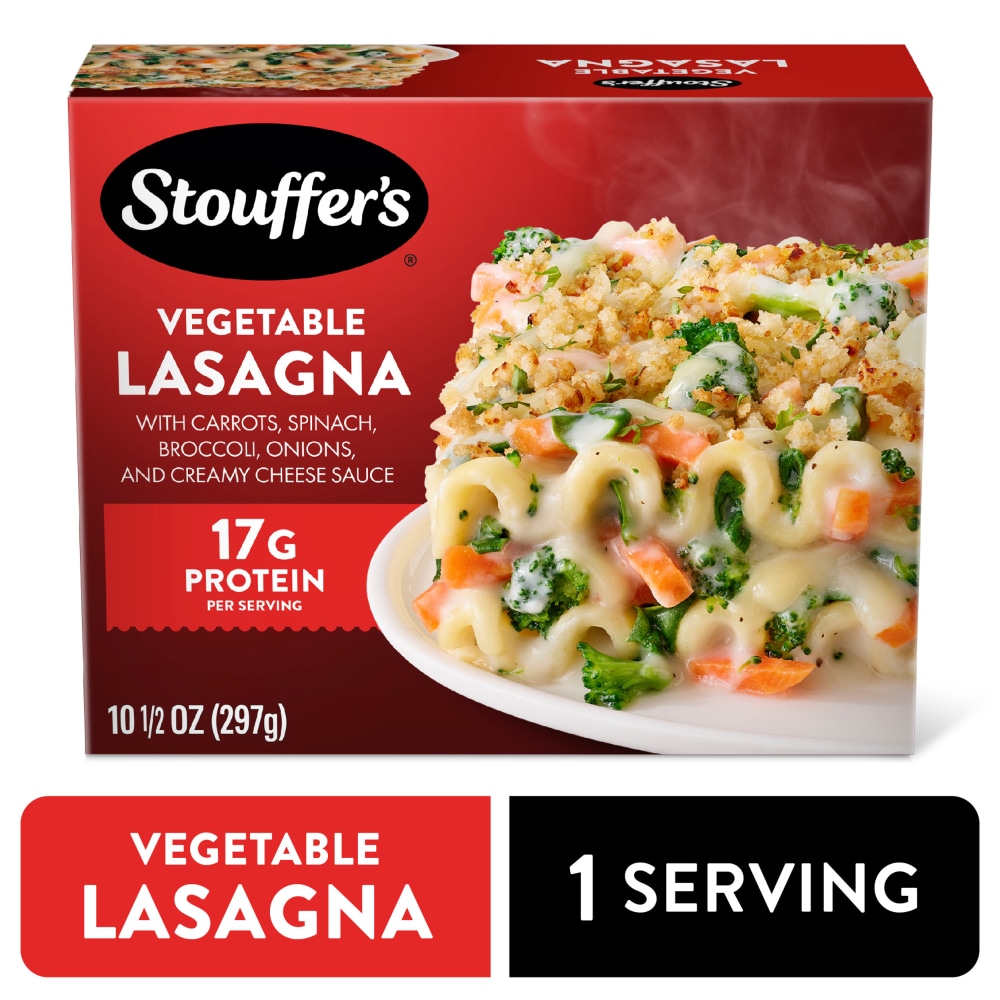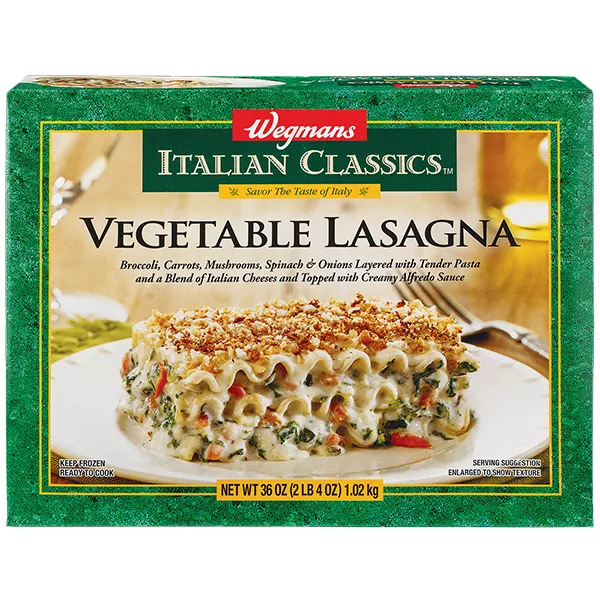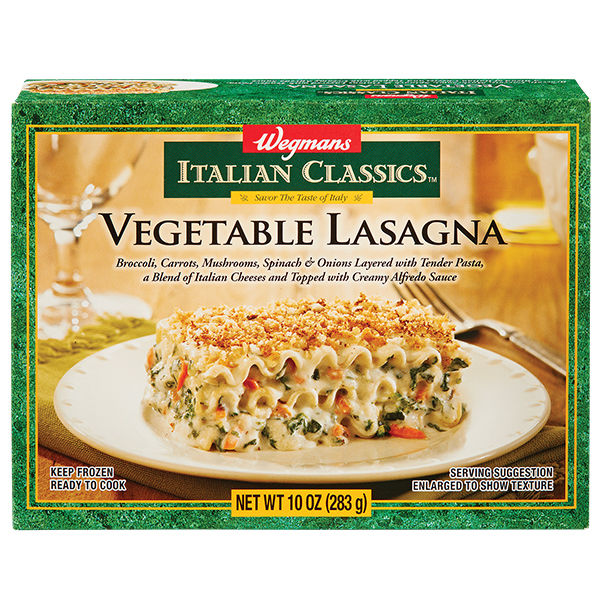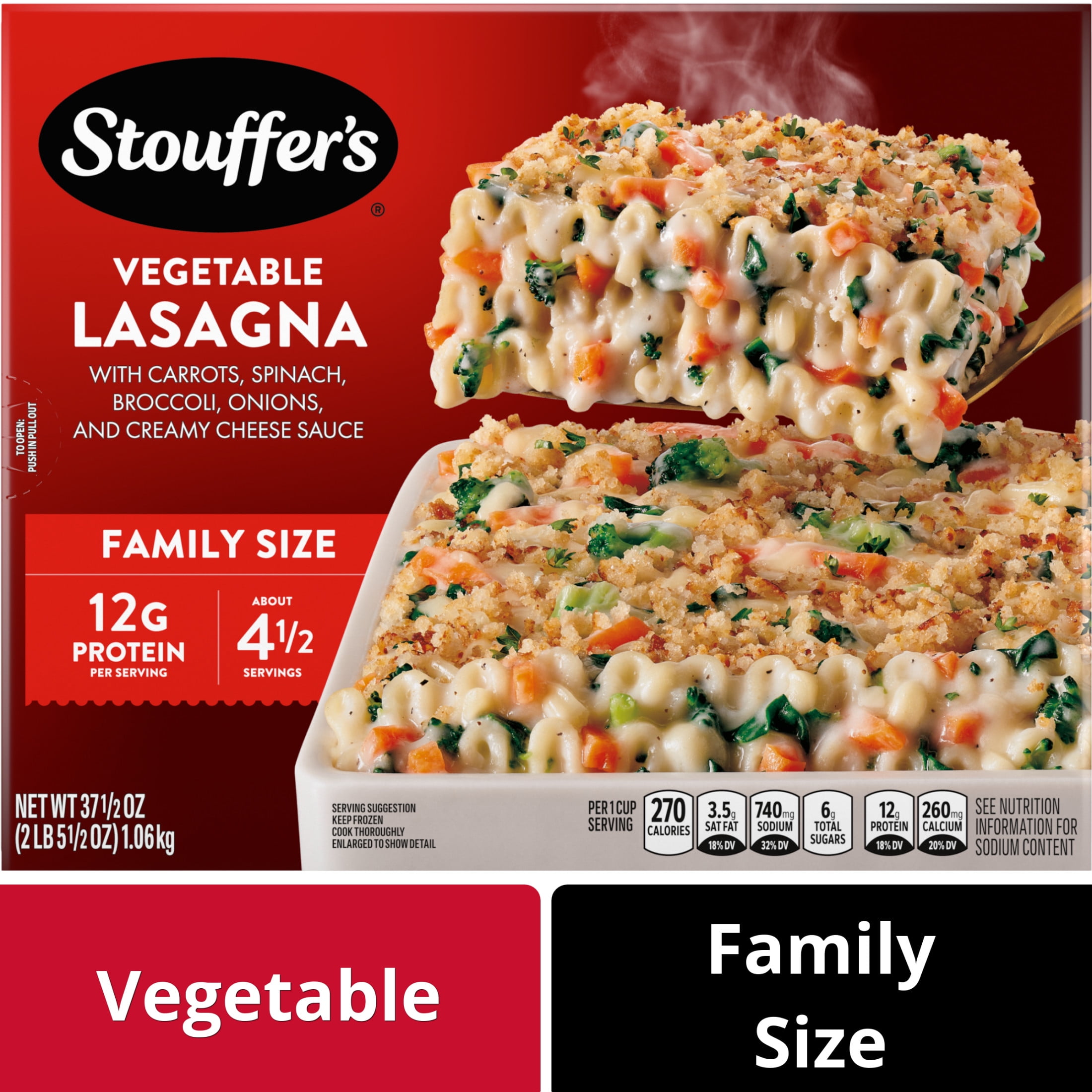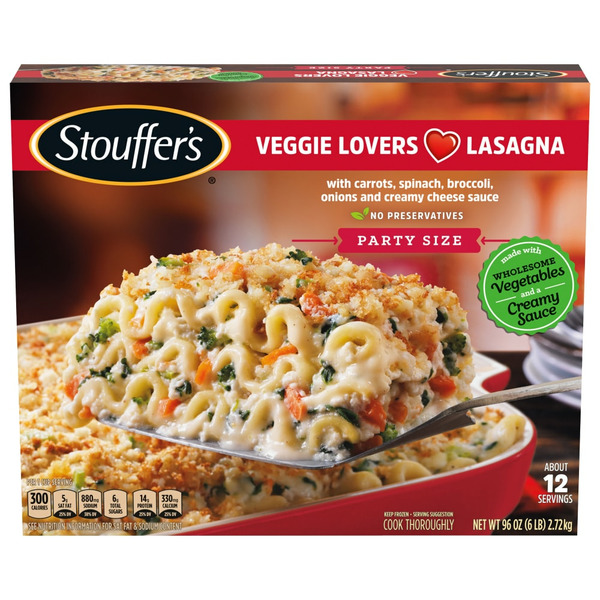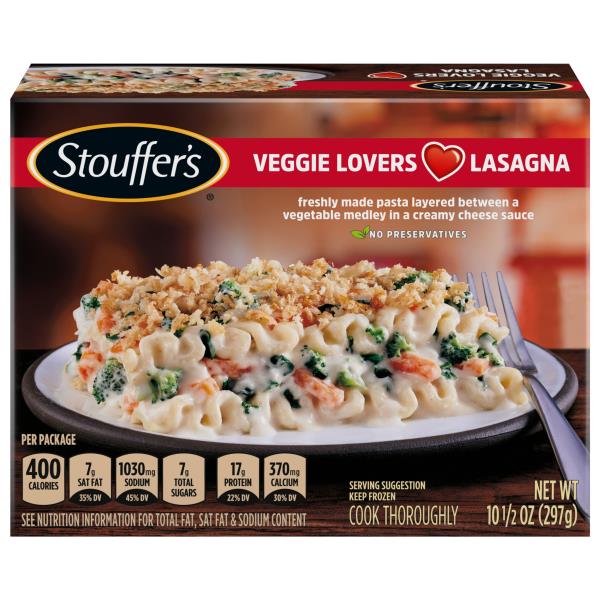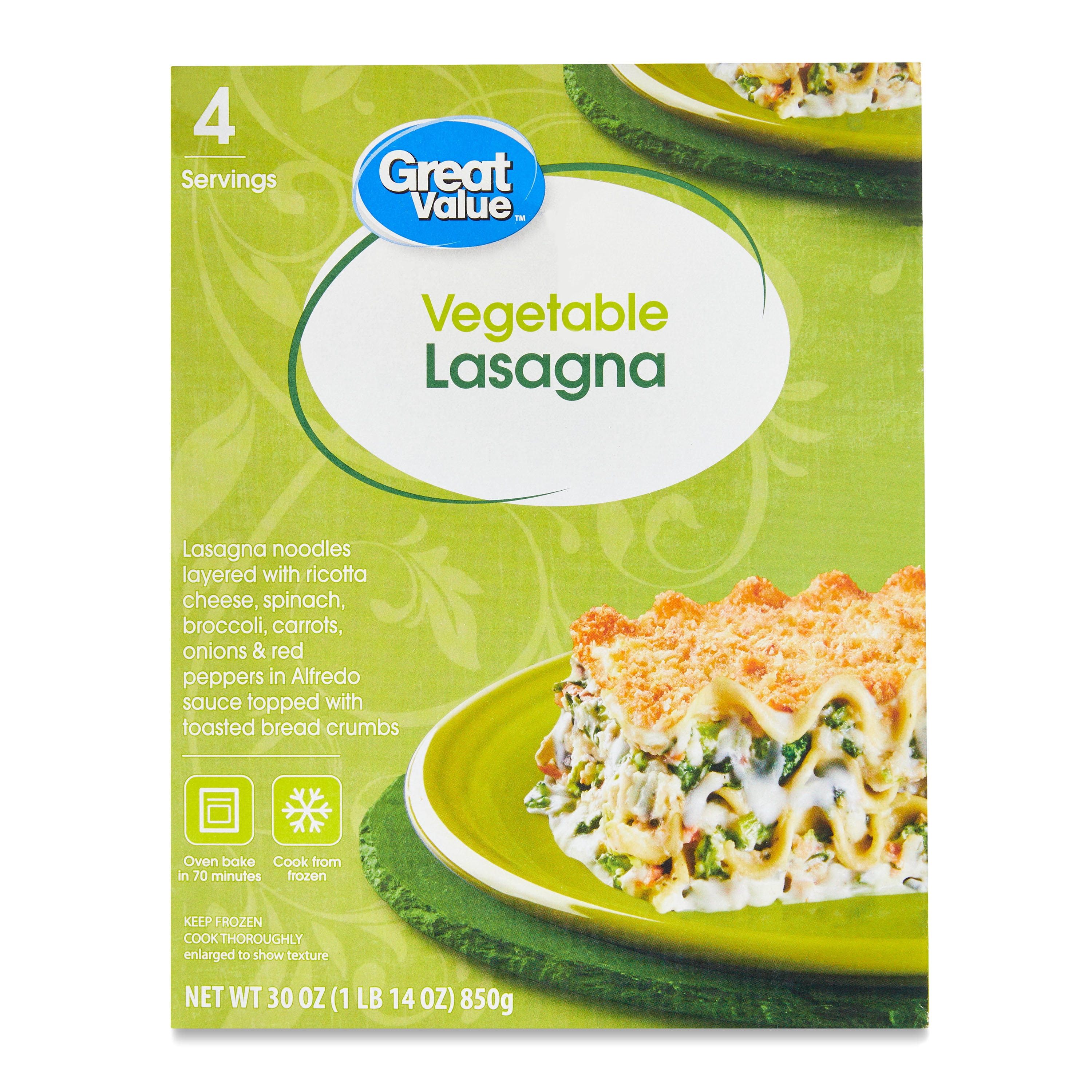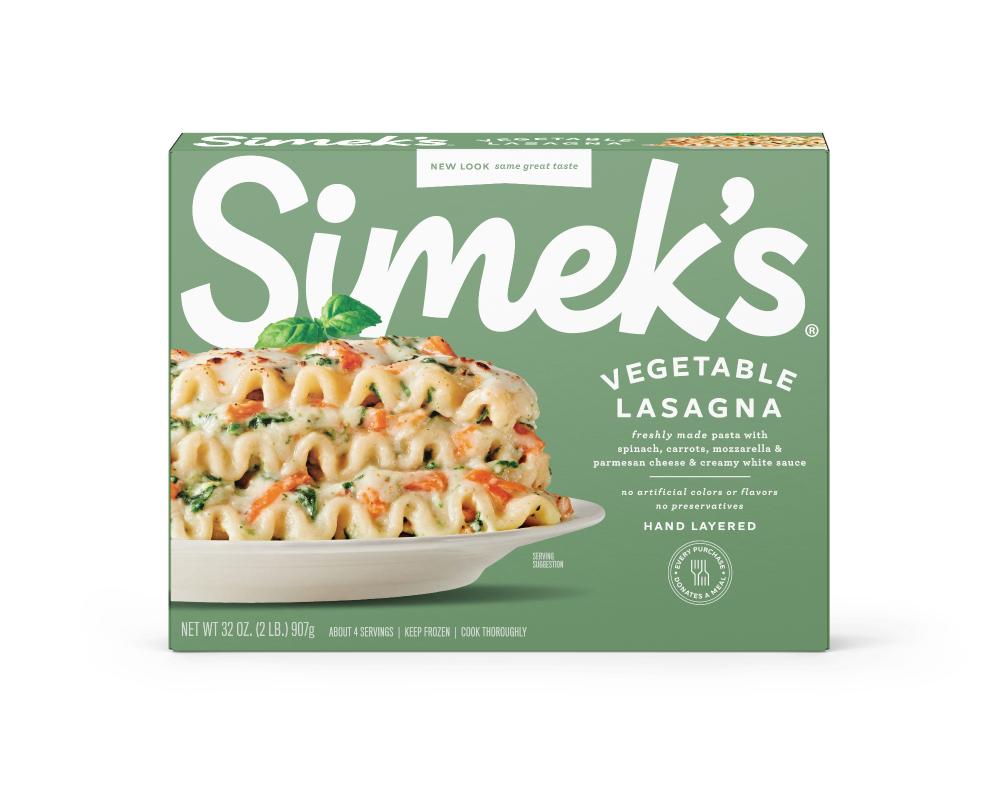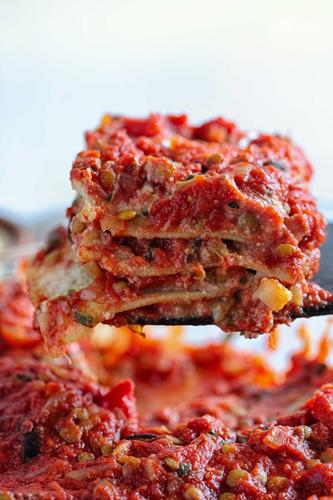MAIN DISHES
Vegetable Lasagna
Vegetable Lasagna is a delicious, nutritious alternative to traditional meat-based lasagna. This dish incorporates a variety of vegetables, such as spinach, zucchini, bell peppers, and mushrooms, layered between pasta sheets and a creamy ricotta or béchamel sauce. The flavors are enhanced with herbs and spices, creating a savory and satisfying meal.
This versatile and customizable dish caters to those seeking a vegetarian option, as well as to those looking to incorporate more vegetables into their diet. Vegetable lasagna is ideal for family dinners, potlucks, and gatherings, and can be easily kept frozen for convenient meal planning.
25%
CARBS
35%
FAT
40%
PROTEIN
145 Vegetable Lasagna Products
Amy's Kitchen Vegetable Lasagna
Stouffer's Creative Comforts Vegetable Lasagna
Wegmans Italian Classics Frozen Vegetable Lasagna
Wegmans Italian Classics Frozen Vegetable Lasagna, Single Serve
Stouffer's Lasagna, Veggie Lovers, Family Size
Vegetable Lasagna With Carrots, Spinach, Broccoli, Onions And Creamy Cheese Sauce, Vegetable Lasagna
Vegetable Fresh-Made Lasagna Pasta Layered With Creamy Sauce, Spinach, Carrots, & Corn Topped With Mozzarella Cheese Lasagna, Vegetable
Stouffer's Creative Comforts Vegetable Lasagna
Great Value Vegetable Lasagna
Simek's Vegetable Lasagna
1 Recipe for Vegetable Lasagna
Vegetable Lasagna FAQ
What is Vegetable Lasagna?
What ingredients are needed for Vegetable Lasagna?
What equipment is needed for making Vegetable Lasagna?
Can I use different vegetables than what the recipe calls for?
How can I adjust the consistency of my lasagna?
What are some common mistakes to avoid when making Vegetable Lasagna?
How can I store leftover Vegetable Lasagna?
Can I prepare Vegetable Lasagna ahead of time?
Expiration & Storage Tips
When does Vegetable Lasagna expire?
If you've bought a store-bought Vegetable Lasagna and it's unopened, it can be stored in the refrigerator until the 'best by' date listed on the packaging. Once opened and if refrigerated properly, it's best to consume the dish within 2-3 days. If it's a homemade Vegetable Lasagna, it should ideally also be consumed within 2-3 days. If you've frozen your Vegetable Lasagna, whether store-bought or homemade, it can last in the freezer for 1-2 months.
How do you tell if Vegetable Lasagna is bad?
Determining the freshness of your Vegetable Lasagna can be done through its smell, look, and feel. First, smell your lasagna. A strong or sour aroma may indicate that it has spoiled. Secondly, look at the lasagna. Any presence of mold or discoloration means that it has gone bad. Lastly, if the texture of your lasagna feels slimy or exceptionally mushy, this can also be a sign of spoilage.
Tips for storing Vegetable Lasagna to extend shelf life
• Always store your Vegetable Lasagna in airtight containers, as this lessens the chance of spoilage and keeps it fresher for longer.
• Vegetable Lasagna should be refrigerated within two hours of being cooked to slow down the growth of harmful bacteria.
• If you've made a large quantity of lasagna and want to freeze some, let the lasagna cool completely before placing in the freezer. This helps maintain the texture and flavour of your lasagna when you reheat it.
• For best quality when freezing, tightly cover the lasagna with aluminium foil or a freezer-safe lid to prevent freezer burn.
• When defrosting Vegetable Lasagna, it's recommended to thaw it in the refrigerator overnight before reheating to ensure even heating and to maintain optimal texture and flavor.
EXPIRES WITHIN
2 - 3.6
YEARS
Substitutes
Health Info
Macros
33g
CARBS
7g
FAT
0g
PROTEIN
Allowed on these diets
LOW FAT
HIGH CALCIUM
VEGETARIAN
Contains these allergens
MILK
WHEAT
